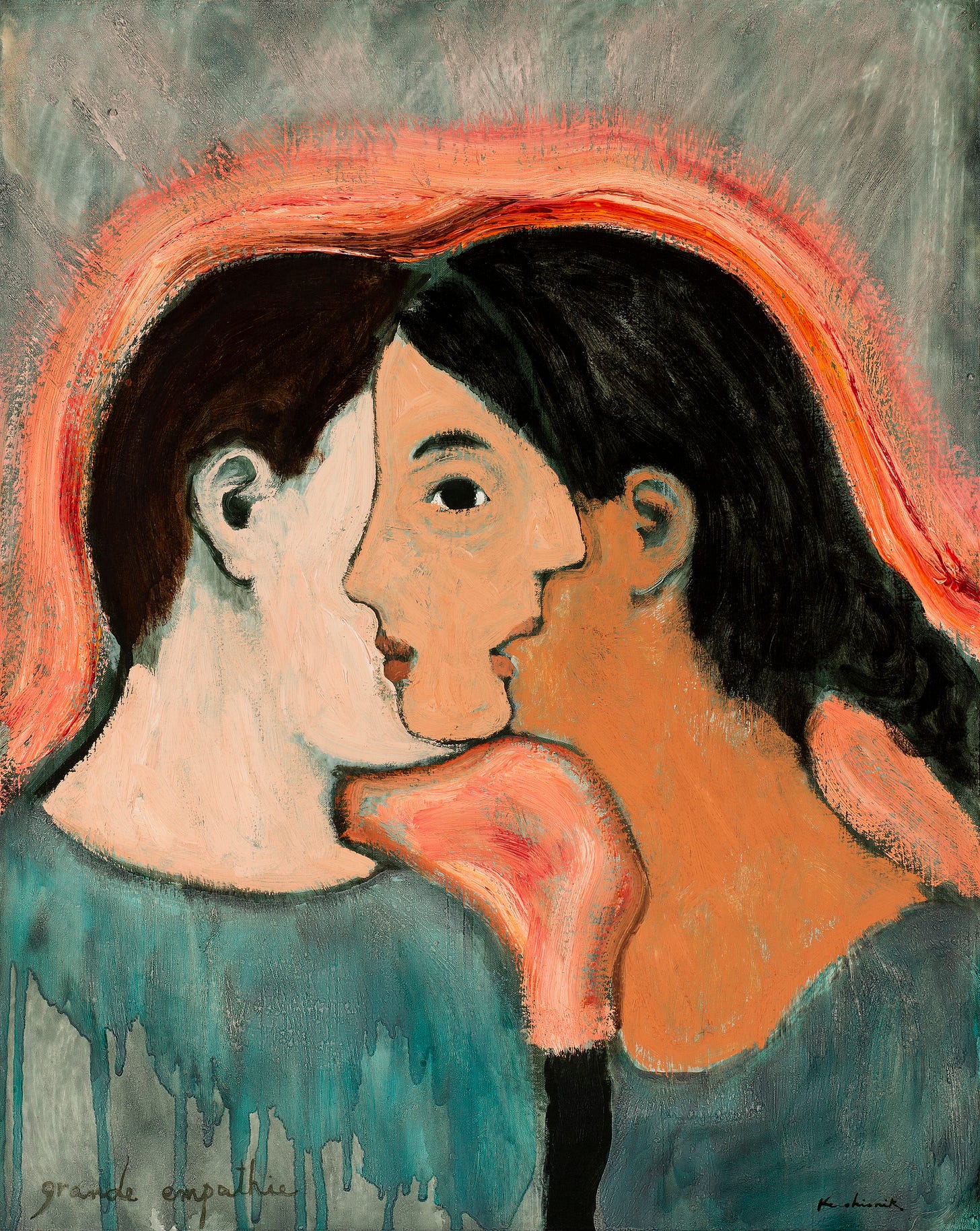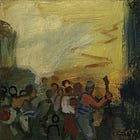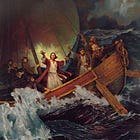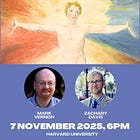Lightning Strike
The Creative Potential of Polarities
We live in strange, strained times. Sometimes it seems that everything and everyone is changing so quickly we can’t predict what will come next. It’s hard to chart a wise course in such troubled waters, and I believe that this is one reason our culture has become polarized. But we aren’t passive participants in this experience of polarization; we have created it ourselves. Tell me if this scenario feels familiar: the more uncertain I feel my future is, the more I take refuge in the familiar and the safe. The more I insulate myself from the unknown, the more I fear it. The next thing I know, I have nothing to say to my brother-in-law at the next family reunion because he and I can’t talk about whether it’s okay to buy styrofoam plates to serve dinner. Some take it as a foregone conclusion that polarization is bad, but I’d like to interrogate that conclusion. What is polarization, after all?
I grew up in Southern California, where thunderstorms are few and far between. One summer, my intrepid mother and her sister took all their children still living at home on a three-week, cross-country Church history tour, camping all the way across the continent. It was epic. One of my most memorable experiences on that trip was watching the awesome power of a midwestern thunderstorm cross over us in the middle of the night. It was amazing, and then scary. I ended up in the van trying to sleep. But I couldn’t, of course. Over and over again the lightning shattered my vision as it illuminated the billowing clouds and cracked across the sky. Thunder growled continuously.
Lightning strikes because the turbulent, churning environment of a storm cloud causes electrons to get ripped from molecules. Usually, negatively charged electrons balance the positively charged protons within an atom or molecule, leaving the molecule overall neutral. But electrons are fickle, and they can move amongst different molecules under the right circumstances. The storm cloud is one such circumstance. The wild interplay of water droplets and temperature differentials causes a storm cloud to accumulate electrons at the base, creating a negatively charged field at the bottom of the storm cloud and a positively charged field at the top. Normally, the negatively charged electrons would be attracted to the positively charged field and would move to create a neutral environment once again, but the insulating properties of the atmosphere prevent the two fields from coming into contact with each other. Compare the storm cloud before and after the formation of the charged fields. One difference is that the storm cloud is more organized. What? An organized storm cloud? But yes! That’s one way of describing it. Organization is one way of storing energy, so this organized storm cloud is actually full of potential energy, just like a coiled spring, or a roller coaster car at the top of the track. As the storm builds, the difference between the negatively charged field and the positively charged field grows greater and greater. Finally, when the pressure of this difference is enough to overcome the insulating effects of the atmosphere, electrons arc from one space to the next, and boom—lightning. All that potential energy has been discharged.
God uses the act of organization as a means of creation. Another way to understand cultural polarization is to see a highly ordered society. We have put a lot of energy into forming a society that permits us to ally ourselves with like minds, frame our views of the world with our preferred perspectives, and behave in ways so that we feel comfortable a good part of the time. We have amazing forms of communication that allow us to form relationships based on worldviews, not simply geographic proximity or practical associations. We have an economy that produces the wealth necessary to sort ourselves into like-minded neighborhoods and cities. We have educational institutions that create distinct cultural norms among the educated populace. Throw us all into a world roiling with as much energy as a million storm clouds, and it’s not surprising that we sort ourselves into ordered groups.
Perhaps, as we examine our own polarized state, we can see ourselves as a highly organized culture at the brink of a new creation, full of potential energy, not unlike that thunder cloud. We’ve all felt that thrum of energy when we face opposition on one of these polarizing issues; maybe it’s a debate at the local school board meeting, or maybe it’s a chance comment in church. Our hearts and minds start racing. The question that naturally follows is how will that energy be discharged? What will happen when our polarized fields come into close proximity and the effects of insulation are finally overcome? Will we see lightning?
Just as I experienced that massive thunderstorm in Nebraska all those years ago, we might describe the phenomenon of meeting our polarized opposites as awesome, powerful, unpredictable, or scary. Scientists who study such things believe that large storm systems can generate enough electricity to power the city of New York, if only it were possible to channel it. But there’s the rub. How can we experience the power of lightning without being destroyed by it? How can we use the energy stored in our polarized culture to make our world better?
Benjamin Franklin could tell you. We protect buildings from lightning (and humans, from lesser electric charges) by grounding them. An object is grounded when it is connected to something that conducts electricity, a lightning rod or a system of grounding cables, for instance. This grounding system guides the electrons safely to the ground, which acts as a reservoir capable of dispersing the concentrated electric field safely. It’s only when a massive charge finds its final resting place in you that you get in trouble—your body just isn’t sufficient to adequately disperse the charge of a large electric field. But if that charge passes through you, or around you, to a much larger reservoir of matter, you are much more likely to be safe.
By now the metaphor is becoming clear. As we come into proximity with our oppositely charged neighbors (and we will—as the social differences between us inevitably increase, it is foolish to think that any amount of social insulation can protect us from contact with people who think and act differently from us, or that such insulation is desirable), we survive the encounter by staying grounded, by being connected with Jesus Christ. Our differences meet in the field of Christ’s universal experience, and none are excluded. We do not have to bear alone the responsibility of grappling with and neutralizing the highly charged feelings, thoughts, and experiences of our neighbors—or ourselves, for that matter! But we can and must allow them to flow through us by committing ourselves to a system of values and practices that is strong enough, capacious enough, to include opposite experiences.
How does this happen, practically speaking? In communities of discipleship, we have opportunities to connect with people in contexts outside the issues that divide us. We can connect with increased frequency as we practice discipleship, but also with increased depth as we demonstrate our commitment to values that unite us. Neighbors who voted differently last election can be chaperones on the next youth campout. The more frequently we meet each other in real life, the more easily we can accept each other’s differences. Discipleship also gives us the opportunity to connect with our neighbors deeply, along the axes of our strongest values, as we participate in the symbolism of our beliefs. For example, when we sit side by side during our remembrance of the Lord’s supper, we are affirming our mutual need for a Savior, and our mutual belief in our value as God’s children. These consistent practices remind us that what unites us is stronger and deeper than what divides us.
I am not proposing a world where we simply coexist with our differences, unchanged by each other. This might be acceptable, but unsatisfying. Luckily, I don’t think such a world is possible. God will continue to trouble the waters of our world, and we will be subject to cycles of difference, division, and reunification until these repeated contacts create something new, until we change. It’s what lightning does. It’s also a feature of love.
Lightning strike. Coup de foudre. Love at first sight. One of the many things I love about the French language is that the term for lightning also means love at first sight. French can be cool, elegant, restrained, but when a language expresses the rush of fresh love as being struck by a bolt of lightning, you know there’s an energetic passion that animates its soul. And so it is for all of us.
Lightning, while powerful, unpredictable, and dangerous, represents that thrilling moment of connection with something opposite to you. Not in opposition, but simply opposite. The thing that you can’t look away from. One of the ways we know we are polarized is that we just can’t leave each other alone. This, strangely, encourages me, precisely because it is the feature of love that is so compelling. A good relationship, a relationship defined by love, is capacious. It provides a place of comfortable security, but it also draws us toward the unknown.
Lightning is connection. Love is connection. This love might be a mingling of energy and matter, like that bolt from the sky, but it’s something more besides. The mingling of hearts is also a kind of knowing. Jesus tells us that eternal life consists of knowing him and God. Years ago, Terryl Givens compared Joseph Smith’s prophetic role to a bolt of lightning. The revelation of God to Joseph Smith in the grove was, like lightning, shocking and powerful. It was this moment of contact that kindled hope in the hearts of disciples. One of those kindled hopes is that our Heavenly Parents desire to be known by us and interact with us. The self-disclosing nature of God’s love seems to me profound. It points to an element of Christ’s redeeming sacrifice that I have overlooked in the past. Jesus withheld nothing of himself during his last week of life. He opened himself fully to the scrutiny and judgment of his fellow men, he revealed his most heartfelt desires. And beneath the olive trees, he received the knowledge of all human experience. What is love if not to see, understand, and comprehend the reality of a life other than our own, and to allow ourselves to be seen in the same way?
It’s a risk to allow one’s self to be known. We risk rejection. We risk anger. We risk the shattering of our own self-image. It’s likewise difficult to attend to another person deeply enough to know them. It is effortful, and there’s no faking it. A bolt of lightning doesn’t act by half measures. And yet there is simply no other way to love. When we feel that frisson of danger warning us to tread carefully in what we say or how we act, or if we sense that charge within ourselves priming us for an explosion, look to the sky and ground yourself to Christ. But by no means shrink back. If you’re lucky, you’ll experience un coup de foudre.
Rachel Frandsen Jardine is the deputy editor at Wayfare. She loves her family, her community, and a good hiking trail.
Art by Brian Kershisnik.











Beautiful essay, Rachel. Opposition makes existence intelligible, the Gods thrive on creating MORE out of it. Our creative team of Gods work to
optimize love and joy out of potential envy and misery.
Best wishes for more writing from you, Randall Paul